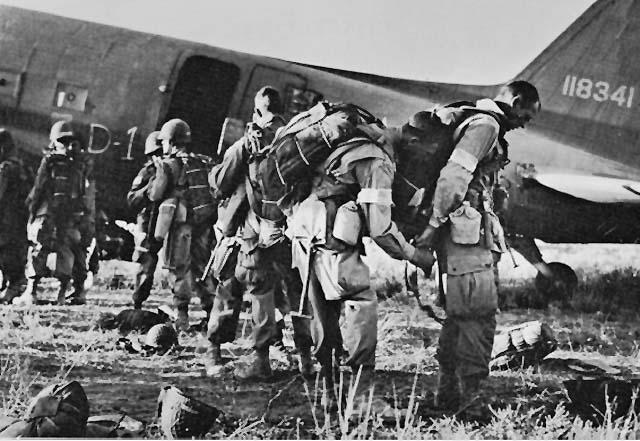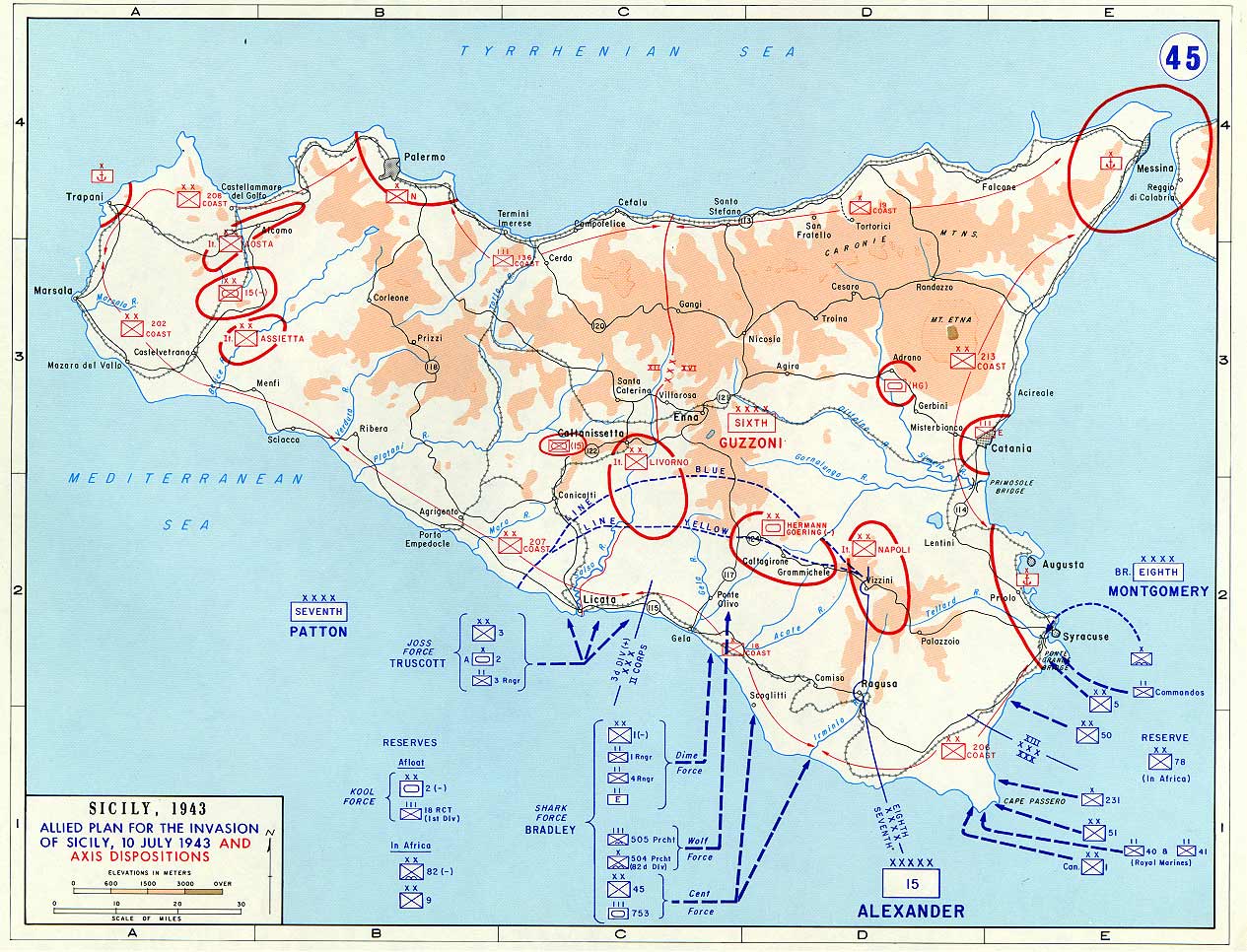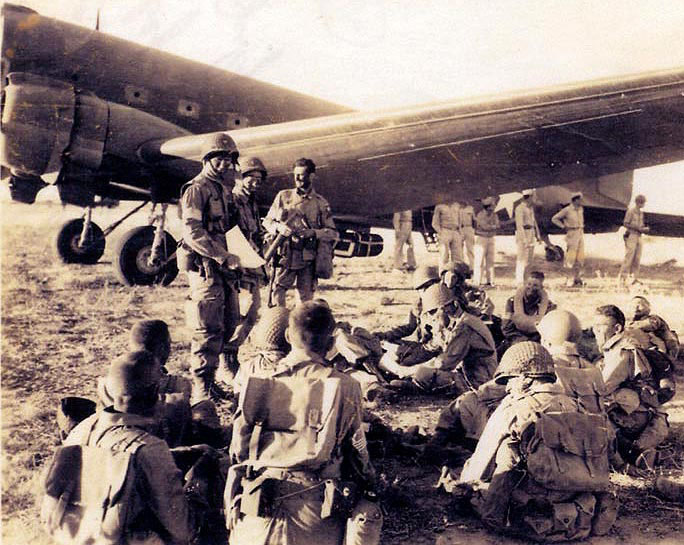
10 July 1943: Following the defeat of Germany and Italy by the Allies in North Africa, the next phase of the war plan was the invasion of Sicily. This began with the largest airborne assault ever attempted by U.S. and British paratroopers up to that time.
Shortly after midnight, a Regimental Combat Team (RCT) under command of Colonel James M. Gavin, United States Army, and consisting of the 505th Parachute Infantry Regiment with the 3rd Battalion, 504th Parachute Infantry Regiment, dropped out of a moonlit sky around Gela on the southern shore of the island and achieved reasonable success. 226 C-47 Skytrains of the 52d Troop Carrier Wing dropped 3,405 U.S. paratroopers. A second airborne assault by the remaining 1,900 paratroopers of the 504th PIR was carried into battle by 144 C-47s from the 52d TCW.
The British Army 1st Air Landing Brigade under Brigadier Philip Hicks arrived on gliders to capture landing zones in the interior of the island.

As the Allied formation of 144 Douglas C-47 Skytrain transports approached the Sicilian shoreline, ships of the invasion force mistook them for enemy aircraft and opened fire. 22 C-47s were shot down and many others damaged. 83 men were killed and 318 wounded.
As a result of the friendly fire incident, the airborne assault was widely scattered, missing assigned drop zones and objectives. However, small groups of airborne troopers acting on their own initiative attacked targets of opportunity and kept the island’s defenders off balance.

The British glider assault, Operation Ladbroke, consisted of 8 Airspeed Horsa and 136 American Waco CG-4 transport gliders. Only 12 of these landed at their targets. At least 65 went into the sea with the loss of over 250 British soldiers.
Operation Fustian was the airborne assault by the 1st Parachute Brigade under the command of Brigadier Gerald Lathbury was carried by 105 C-47s, 11 Armstrong Whitworth Ablemarle paratroop transports, 11 Horsa and 8 Waco gliders. Approximately 40 of these were shot down by Allied and Axis anti-aircraft fire and several were lost to mid-air collisions. Many transports were badly damaged and had so many wounded paratroops that they aborted the mission and returned to North Africa.
Despite significant problems, the airborne troops kept the island’s defenders off guard and had a “positive effect” on the outcome of the invasion.
© 2018, Bryan R. Swopes